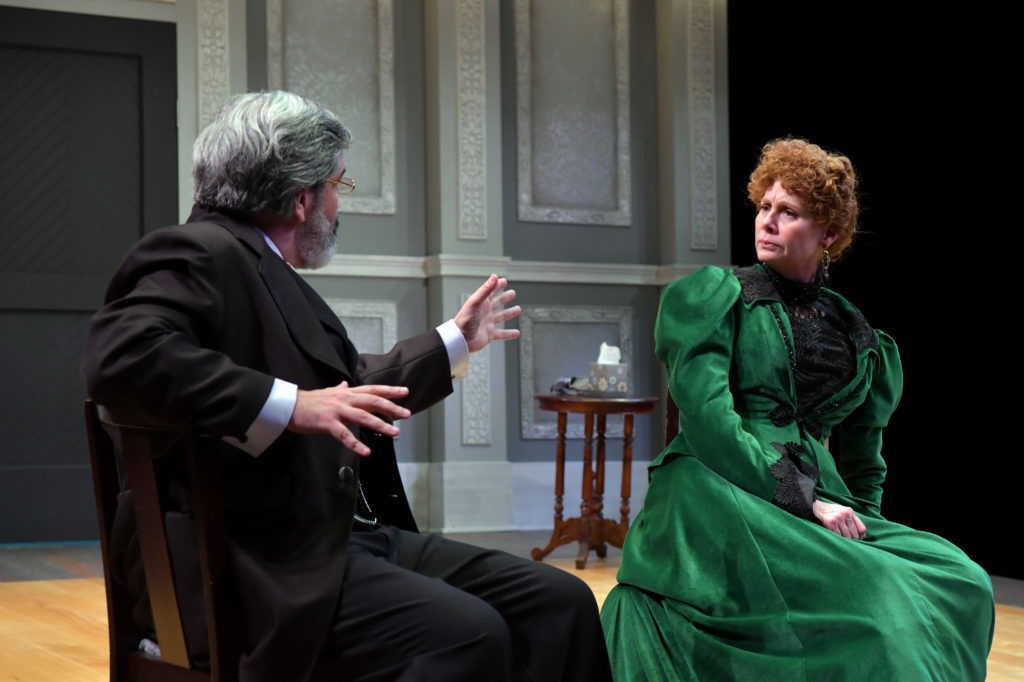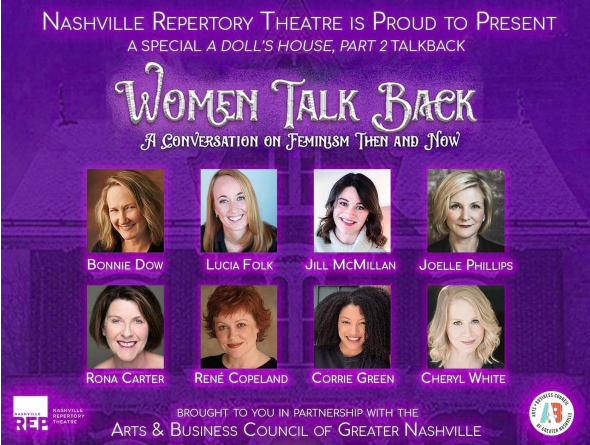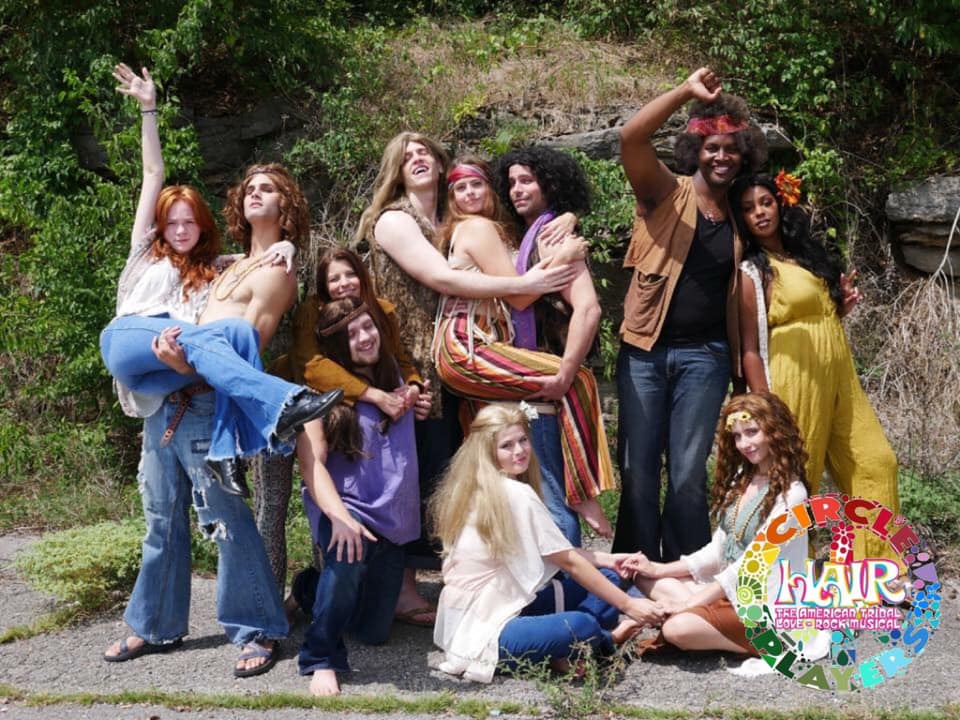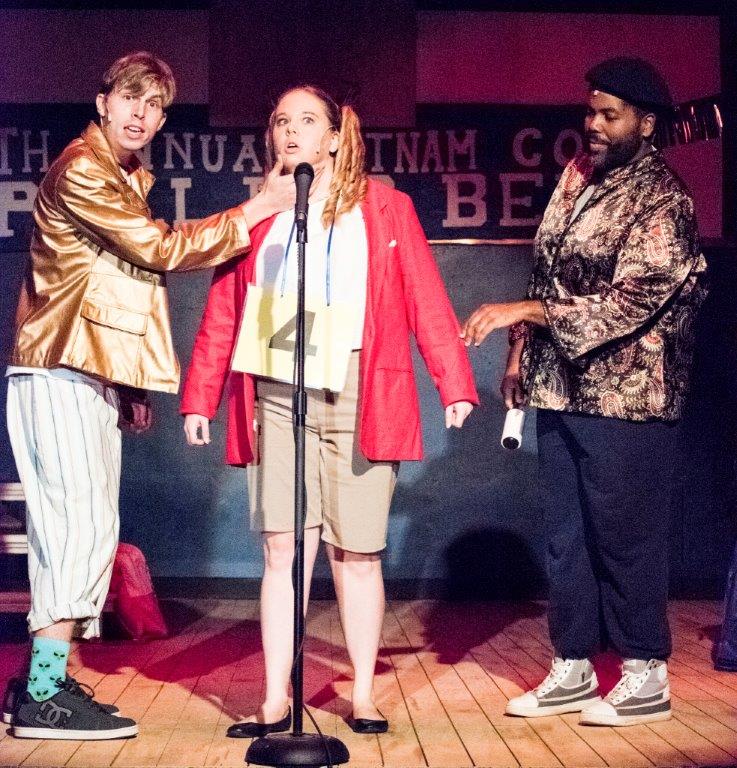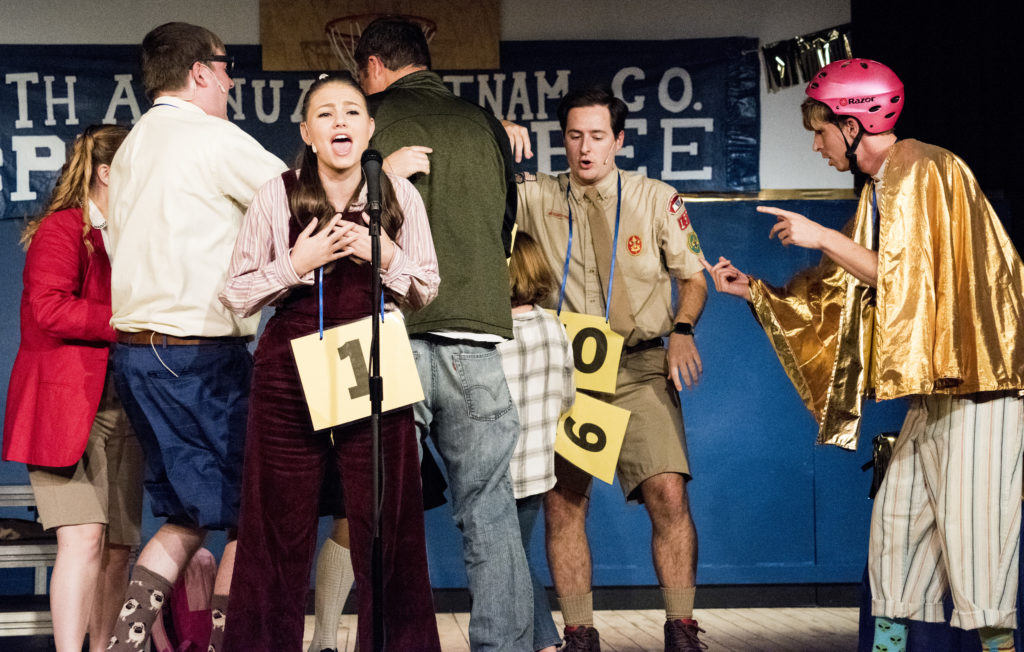
Having garnered second place in Chaffin’s Barn Dinner Theatre’s second annual Clash of the Playwrights competition, Stop Me If You’ve Heard This One will make its stage debut with a limited three-day engagement Backstage at The Barn beginning with a Thursday matinee March 28 at noon and two evening performances Friday and Saturday, March 29 and 30.
Written by Vanderbilt English Professor, Judy Klass, Stop Me If You’ve Heard This One tells the story of what happens when a nice Jewish man gets an emergency call from his retired parents in Florida urging him to come visit. Under the impression his trip is because of his father’s medical emergency, he soon discovers the family is plotting to fix him up with his niece’s nanny.
Earlier this week, as the playwright and cast prepared for their opening performance, I had the opportunity to chat with them about the play, family, dating and all things Stop Me If You’ve Heard This One for my latest Rapid Fire 20 Q.
—————————
RAPID FIRE WITH STOP ME IF YOU’VE HEARD THIS ONE PLAYWRIGHT, JUDY KLASS
 JHP: What’s your play about?
JHP: What’s your play about?
JUDY KLASS: It’s about a family. It’s about how people you love drive you crazy, and it’s still worth putting up with it, and working through problems, because your time with them is precious. And it’s about how jokes, no matter how long and shaggy they are, can be a means of communication between people.
JHP: Your play is being presented this weekend Backstage at The Barn after having come in second at Chaffin’s playwright competition. How excited were you to learn your play had taken that prize?
JUDY KLASS: I was very excited. The play won the Dorothy Silver Award some years back, but it was never fully staged. Other plays of mine have gone up elsewhere, but I’ve never had a full-length play produced in Nashville before, though I’ve lived here thirteen years. So, to have this play produced at last, and to have that kind of recognition in the place where I live, is a wonderful thing. I’m happy that people I know here are coming to see it.
JHP: It’s often said that playwrights and fiction writers in general, draw inspiration from what they know…are these characters based on your own family, friends or acquaintances? If so…do they know?
JUDY KLASS: Yes, this play draws on aspects of my own family. My father, close to twenty years ago, told me a joke over the phone. I said: “That actually would work as the first scene of a play.” I got off the phone and imagined dramatizing the joke as a scene. It’s an old Jewish joke, and I imagined writing a comedy where characters would tell each other jokes, many of them old Jewish jokes, and that dramatized-joke-scene would kick things off. I figured I’d ask my father to write the play with me, or at least contribute the jokes I’d need along the way. Then, my father, Morton Klass, suddenly died in the spring of 2001. And I figured: that’s it, I can’t write that play. Forget the whole thing. Some months or a year later, I reconsidered. I felt that I should write the play, and quickly, while I still had so many jokes my father had told me in my head, and I could still hear his inflections — his way of telling them. So, that’s what I did, and in a sense, it’s still the kind of collaboration I hoped to have with him. And I tried to capture things that I liked about my family when I was growing up. It’s got a bit of the flavor of our household when people gathered for a holiday — a bit of us in our element, as a family. Some family members attended a reading of it in NYC.
JHP: I understand you visited Backstage at The Barn during rehearsal. Can you describe the feeling of seeing your characters in the flesh?
JUDY KLASS: It was wonderful to sit in on a rehearsal. Joy Tilley Perryman is doing a terrific job as director, and the whole cast is top-notch — it’s a professional production. The play has had five more or less staged readings — one at the Cleveland Playhouse when it won the Dorothy Silver Award, the reading in NYC, two in Florida and one in San Diego. But it was exciting to see actors really learning their parts, off book, with blocking, and to see this play receiving the care that goes into a full production, with actors playing moments again and again to get the humor and the serious aspects right. I feel very good about it going up at Chaffin’s Barn.
RAPID FIRE WITH STOP ME IF YOU’VE HEARD THIS ONE’s AUSTIN OLIVE
 JHP: You play Alan. How would you describe him?
JHP: You play Alan. How would you describe him?
AUSTIN OLIVE: Alan is definitely high strung. I think deep down he has a good heart. He just spends most of his time wrapped up in his own life and pursuits. He spends a lot of his time worrying about other people’s perception of him. He has found success in New York as a writer, but there is still a void in his life that leaves him deeply unhappy. He does love his family, but those feelings often manifest as sarcasm and combativeness.
JHP: A subplot of the show revolves around Alan being set up with a girl he doesn’t know. Have you ever been set up on a date?
AUSTIN OLIVE: Fortunately, I have managed to avoid being set up on a blind date with anyone so far. I tend to not like the feeling of not knowing or having control of my circumstances. I would like to keep my dating experience confined to people I have had the chance to meet and decide for myself whether or not I like them.
JHP: Speaking of your unexpected date…Cassie Donnegan is cast as Lisa, the aforementioned set up, who also happens to be your character’s nieces’ au pair. What’s Cassie like as a scene partner?
AUSTIN OLIVE: Cassie is a wonderful scene partner. We have done several shows together in the past couple of years. I always enjoy working with Cassie. It always helps to work with someone who you know well. There is a certain level of comfort that allows us to joke around and have fun while we’re working.
JHP: I understand Daniel Bissell and LaDarra Jackel are playing Alan’s somewhat stereotypical Jewish parents. What would be the best thing about having those two as parents in real life?
AUSTIN OLIVE: LaDarra and Daniel are two of the funniest people I know. I absolutely love working with them. They are certainly not old enough to be my parents in real life, but if they were, the best thing about having them as parents would be the warmth and support they both give to everyone. They are two of the most genuinely delightful people I have had the opportunity to work with.
RAPID FIRE WITH STOP ME IF YOU’VE HEARD THIS ONE’s LaDARRA JACKEL
 JHP: Tell me about Ida.
JHP: Tell me about Ida.
LaDARRA JACKEL: She is loving, opinionated, and has a passion for life. Family is the most important thing to her and she is at her happiest when everyone is together.
JHP: One of the early plot points has Alan basically being tricked by his father to travel from New York to Florida. What’s the craziest thing family has ever convinced you to do?
LaDARRA JACKEL: I have some family that lives in Texas. When they moved into their house my Uncle asked us to come visit for our vacation. When we got there he put us to work and had us laying the sod in his yard. It was so hot that summer and we all still complain about it to this day.
JHP: Joy Tilley-Perryman is directing this show. What’s it like working with her as a director?
LaDARRA JACKEL: Joy is wonderful! She really has an eye for comedy and encouraged us to become a family unit organically. I also appreciate that she is always respectful of our time and keeps us laughing daily.
JHP: Young Kylan Ritchie plays Ida’s granddaughter, Sandra. Knowing most of the cast myself, I’m just gonna ask…Have you guys warped her young innocent mind yet?
LaDARRA JACKEL: I hope not! Let’s be real though. She’s a teenager in a social media world. She has probably seen or heard worse.
RAPID FIRE WITH STOP ME IF YOU’VE HEARD THIS ONE’s, JENNY NORRIS
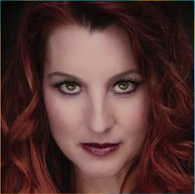 JHP: Who is Abbie?
JHP: Who is Abbie?
JENNY NORRIS: Abbie is the daughter of Ida and Murray. She is opinionated and intelligent, but also kind hearted and family oriented.
JHP: With this being the first full staging of the show. How much fun are you having creating this character?
JENNY NORRIS: Creating a character so the audience will say “ I know that person” is my favorite part of doing any show. So having the opportunity to do that with a brand new character is the most fulfilling creating process.
JHP: When I chatted with Judy, the playwright, I asked her about dropping in on a rehearsal. What was it like having the person who wrote the lines you’re performing there during that stage of the production?
JENNY NORRIS: Ha! Well I could lie and say its no sweat but…
JHP: What is it that keeps you coming back to The Barn show after show?
JENNY NORRIS: Well it helps that they keep offering. But, seriously, they believe in me and trust me and that means everything to me as an actor. Plus they are truly my family. Whether I’m in the show, waiting tables, or doing sales for the barn, coming to work is a joy bc I’m surrounded by people I love to be around and inspire me daily. Norma, Martha, Joy, Everett, Curtis, Miriam, Donnie*, the entire cast of this show, and so many others I’ve had the honor of being in- they are the smartest, funniest, most talented, kindest people I know, so surrounding myself with them is my privilege.
*to expand upon Jenny’s response, Norma Luther is Chaffin’s current owner; Martha Wilkinson, the company’s Artistic Director; Joy Tilley Perryman, production manager, props mistress and this show’s director; Everett Tarlton, Chaffin’s social media coordinator, as well as frequent actor/director/choreographer; Curtis LeMoine, frequent Chaffin’s actors/choreographer; Miriam Creighton, the company’s costumer and Donnie Hall, Chaffin’s Director of Operations.
RAPID FIRE WITH STOP ME IF YOU’VE HEARD THIS ONE’s J. ROBERT LINDSEY
 JHP: You’re cast as Howard. What’s the best way to describe him?
JHP: You’re cast as Howard. What’s the best way to describe him?
J. ROBERT LINDSEY: Howard is the son-in-law of this very close-knit family. He is a bit dorky, but also very warm. I’ve based my portrayal of him on my experiences of meeting past boyfriends’ families. While Howard has had several years to get to know his wife’s parents and brother, there is still that bit of awkwardness and disconnectedness that comes along with not being on the “inside” of the family.
JHP: While this show has had a couple of staged readings, this marks its first full staging. What’s it like bringing a show to the stage for the first time?
J. ROBERT LINDSEY: I always enjoy originating a character and being part of the development of a piece. It gives you freedom to create the character without a previous portrayal from which to draw. While I enjoy playing iconic characters as well, there is often pressure to pay homage to prior performances. With an original show, you get to be much freer during the whole process.
JHP: Within the show, you’re married to Jenny’s character, Abbie. Jenny is one of my ‘theatre crushes’. What’s something about Jenny as an actor that your admire?
J. ROBERT LINDSEY: Jenny has become one of my “theatre crushes” as well! I have thoroughly enjoyed playing her stage husband. One of the things I admire about Jenny is her ability to completely transform into the character she is portraying. Not only does that make her performance authentic, she is also able to build extremely believable on-stage relationships with the other characters. I also love that we try to make each other laugh with our husband and wife ad libs.
JHP: If there’s a lesson to be learned from Stop Me If You’ve Heard This One, what would it be?
J. ROBERT LINDSEY: The lesson in this show is that you’ve got to be yourself – no matter what. There is also a message of accepting and loving others for who they are – no matter what. At the heart of this play is a family that really loves each other, and that has been something really fun to portray.
——————————
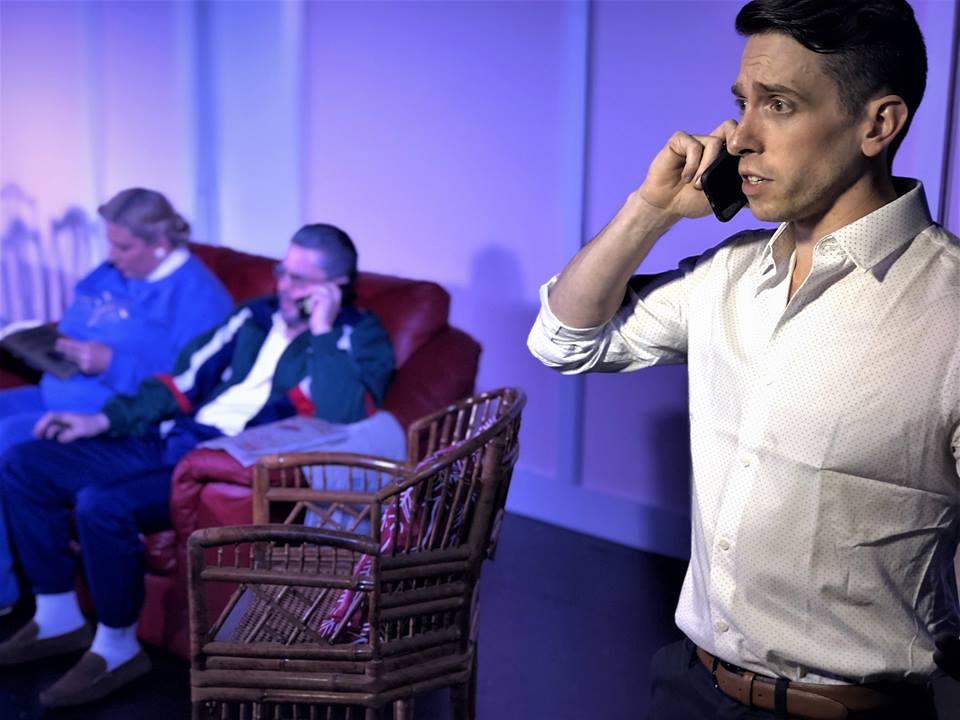
As I prepared to post this Rapid Fire 20 Q, I learned that both Friday and Saturday evening’s performances have SOLD OUT! There are a selection of tickets available for Thursday’s matinee. Backstage at the Barn offers two ticket options. Show Only tickets are $19 while their Show and Box Lunch option is $27.50. If you are looking for some midday laughs, get your weekend started early and CLICK HERE or call 615.646.9977 to purchase tickets.
Following this premiere production of Stop Me If You’ve Heard This One, Chaffin’s will be bringing back last year’s Clash of the Playwrights winner, Ollie’s Diner by Ron Osbourne. Having initially had its limited debut run Backstage at the Barn, when the show returns for a full run this season from October 17 to November 2, it will be presented on Chaffin’s Main Stage. Call 615.646.9977 for tickets or more information.
To learn more about Stop Me if You’ve Heard This One playwright, Judy Klass, CLICK HERE. For more about Chaffin’s Barn Dinner Theatre, CLICK HERE or follow them on Facebook, Instagram and Twitter.
Interested in coverage for your latest entertaining endeavor? Click the contact page and drop me a note. You can also follow JHP Entertainment on Instagram and Facebook.

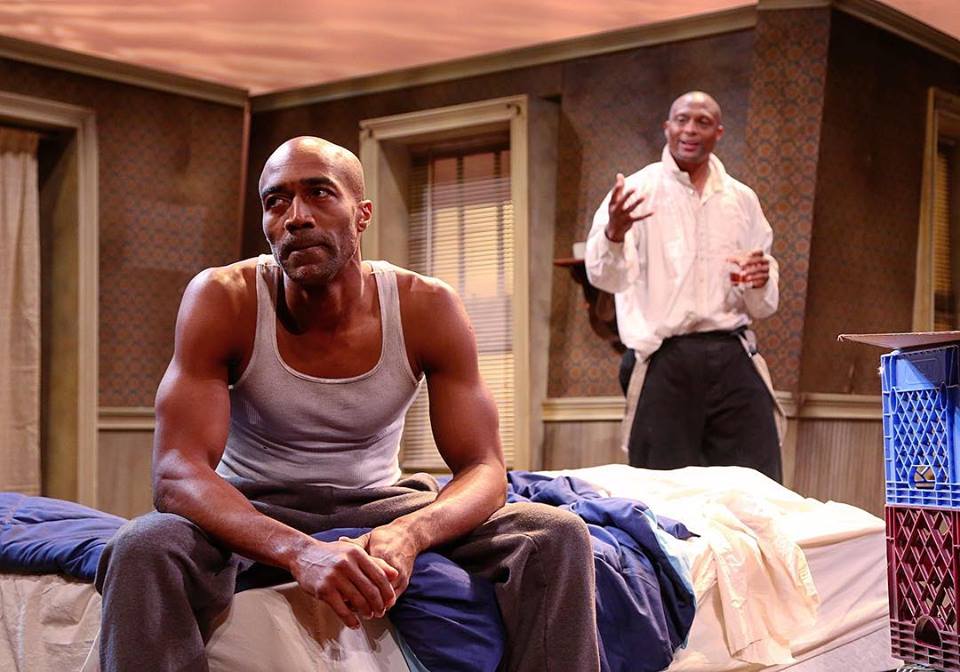


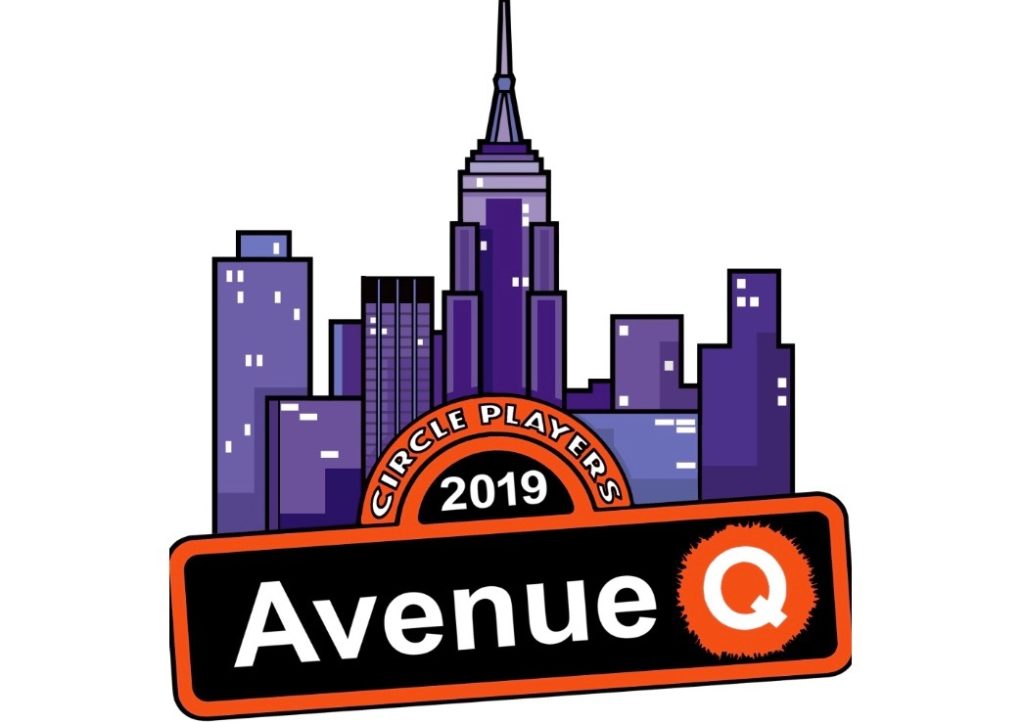
 JONATHAN H. PINKERTON: Earlier this theatre season, Circle Players presented one of the first of many area productions of Newsies and now you’re directing Avenue Q, another show that’s proven to be popular with Middle Tennessee theatre companies. What about Circle’s Avenue Q will make it stand out amongst the rest?
JONATHAN H. PINKERTON: Earlier this theatre season, Circle Players presented one of the first of many area productions of Newsies and now you’re directing Avenue Q, another show that’s proven to be popular with Middle Tennessee theatre companies. What about Circle’s Avenue Q will make it stand out amongst the rest? JHP: I asked Brian about directing a show whose cast includes puppets. On a similar note, what challenges did you face in designing a urban neighborhood set inhabited by humans and puppets?
JHP: I asked Brian about directing a show whose cast includes puppets. On a similar note, what challenges did you face in designing a urban neighborhood set inhabited by humans and puppets? JHP: This is your first show with Circle. What’s the experience been like so far?
JHP: This is your first show with Circle. What’s the experience been like so far? JHP: Like your co-star, Carly, Avenue Q is also your Circle debut. What’s the best part of being in a show at Circle?
JHP: Like your co-star, Carly, Avenue Q is also your Circle debut. What’s the best part of being in a show at Circle? JHP: You play Lucy the Slut, Mrs. Thistletwat, and a brief turn as Purpose Boxes in Avenue Q. How much fun are you having in this show?
JHP: You play Lucy the Slut, Mrs. Thistletwat, and a brief turn as Purpose Boxes in Avenue Q. How much fun are you having in this show? JHP: Avenue Q is your third show with Circle. What keeps you coming back?
JHP: Avenue Q is your third show with Circle. What keeps you coming back?
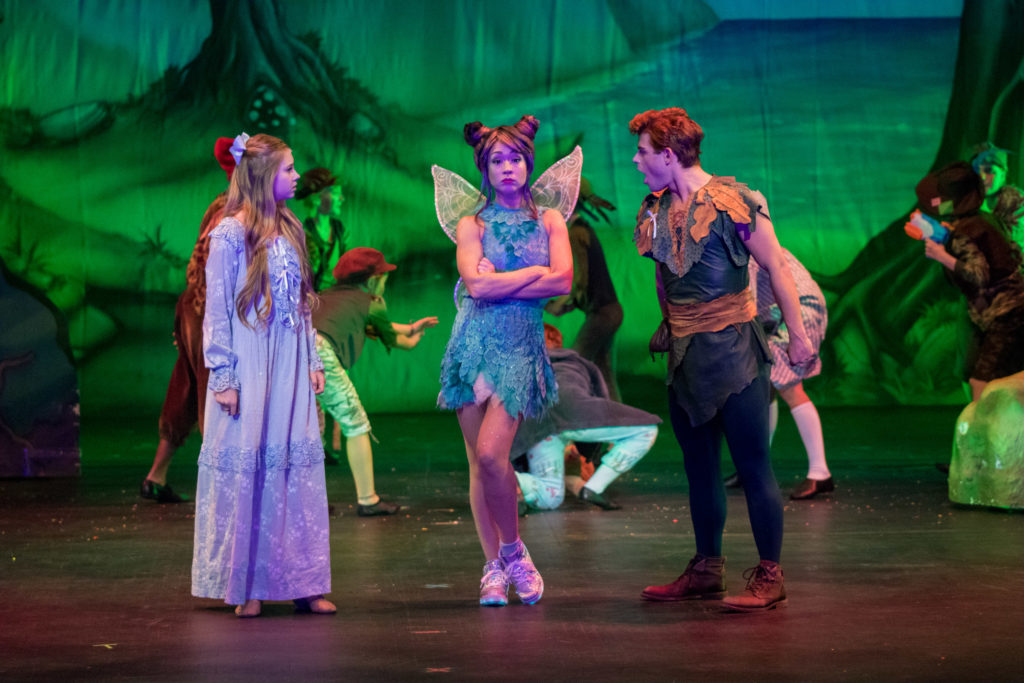



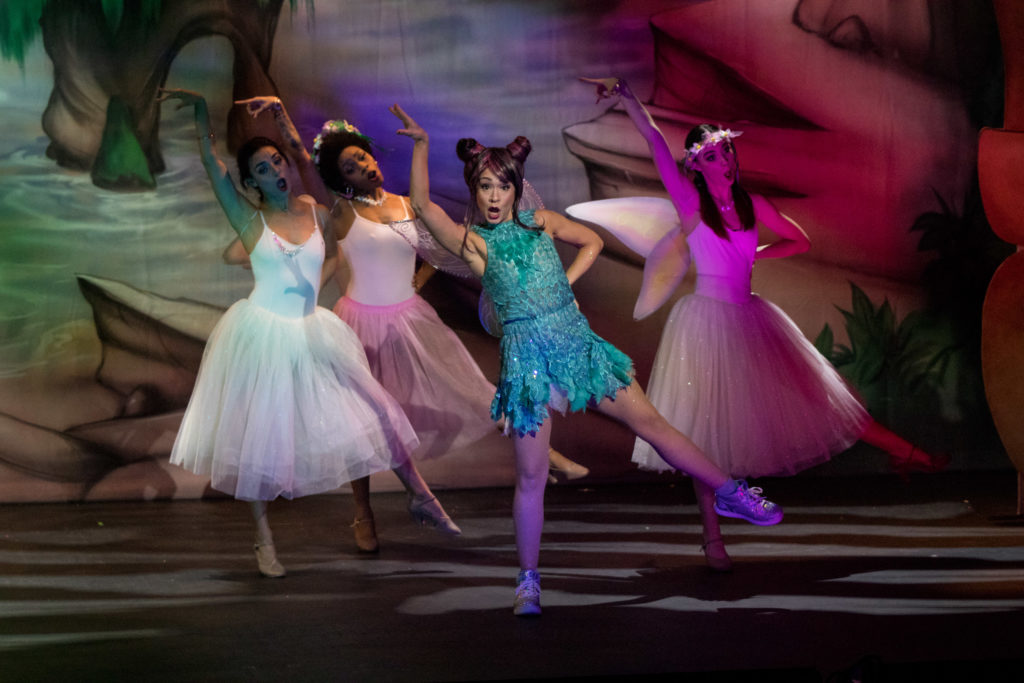

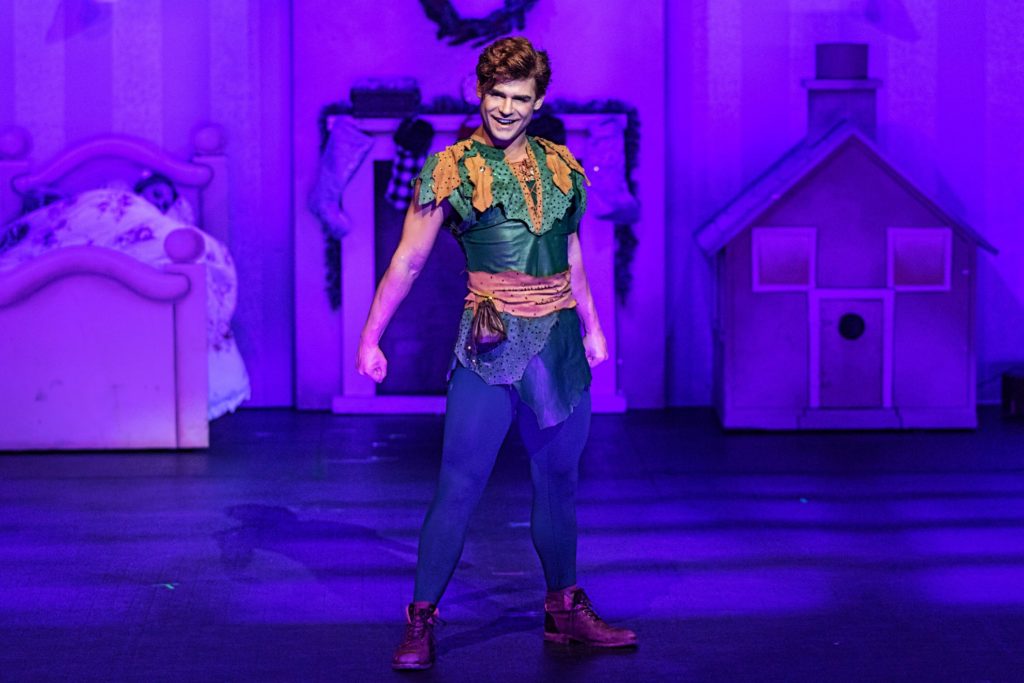


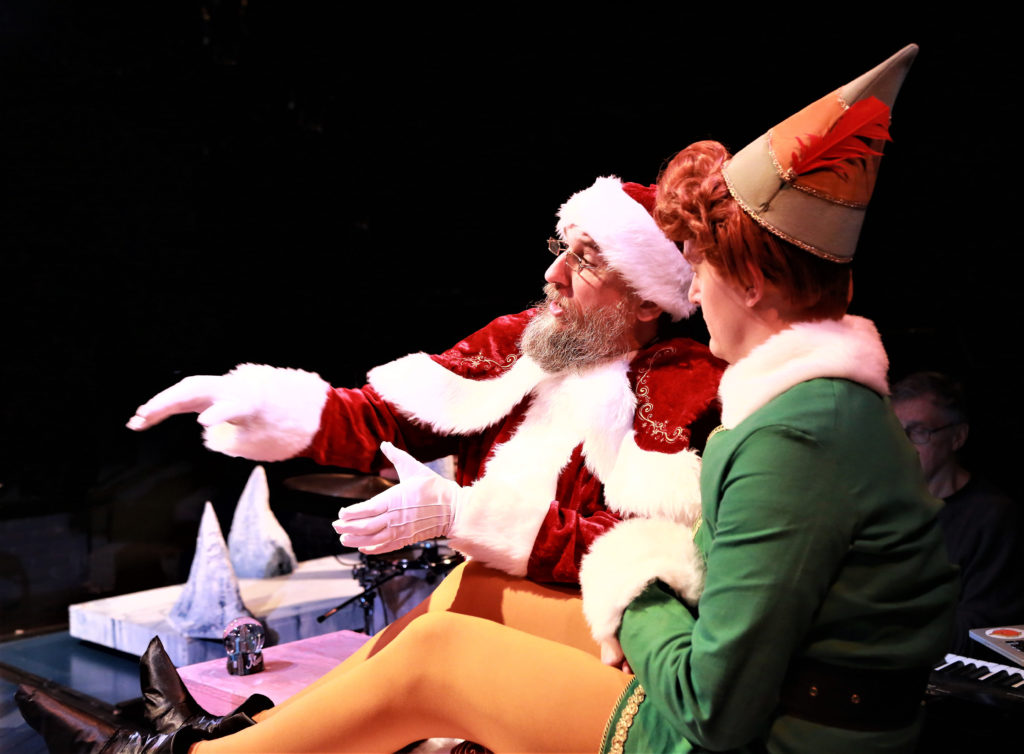
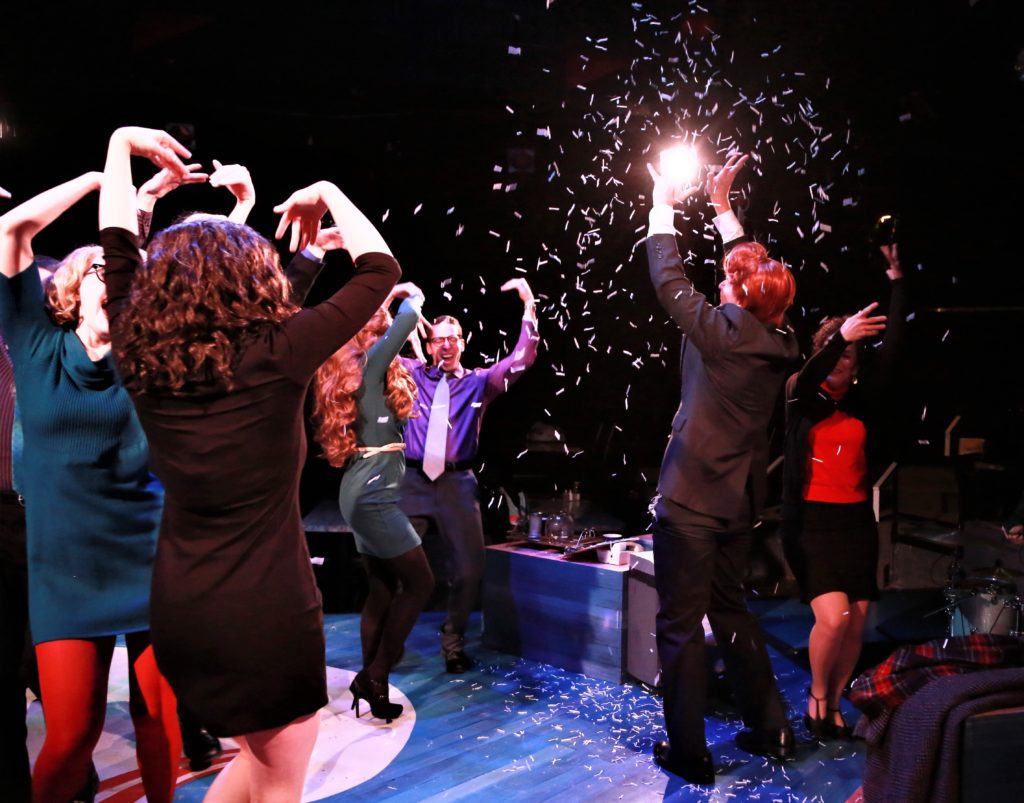
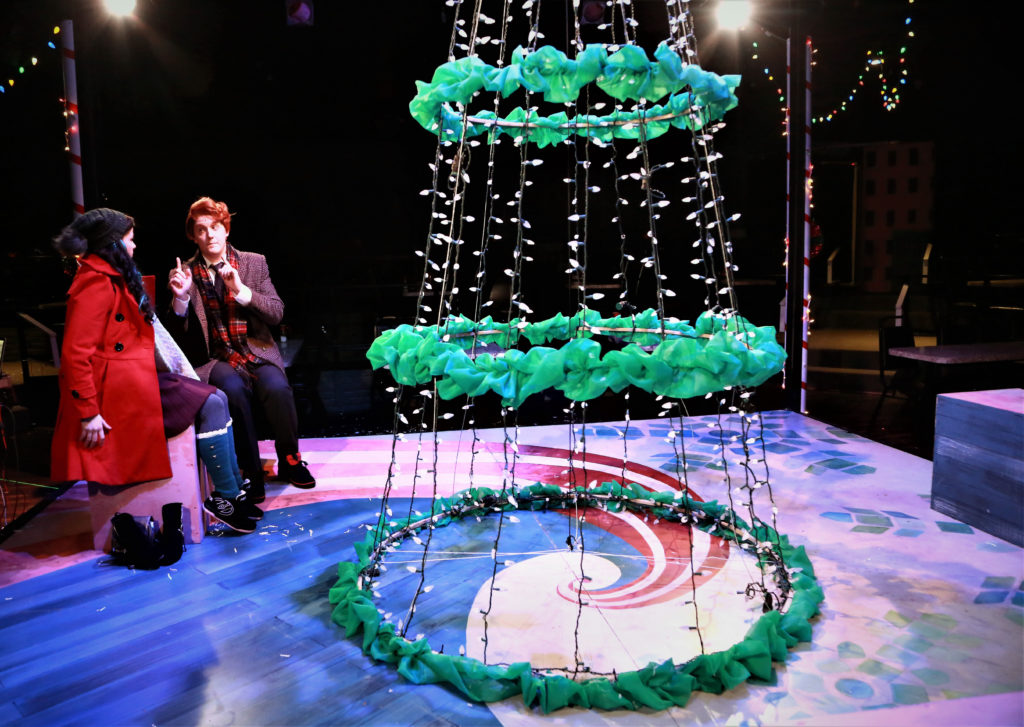


 RAPID FIRE 20 Q WITH THE CAST OF CHAFFIN’S BARN’S ‘ELF: THE MUSICAL’
RAPID FIRE 20 Q WITH THE CAST OF CHAFFIN’S BARN’S ‘ELF: THE MUSICAL’ JHP: Alright, I just have to tell you, when I heard you had been cast as Buddy, I immediately thought…’genius casting’. Has playing Buddy become an unexpected dream role?
JHP: Alright, I just have to tell you, when I heard you had been cast as Buddy, I immediately thought…’genius casting’. Has playing Buddy become an unexpected dream role? JHP: You play Jovie. What can you tell me about her?
JHP: You play Jovie. What can you tell me about her? JHP: Since holiday games are fun…Here’s a word game for you…How would you describe Michael in five words?
JHP: Since holiday games are fun…Here’s a word game for you…How would you describe Michael in five words? JHP: How would you describe Walter?
JHP: How would you describe Walter? JHP:
JHP:  Elf: The Musical opened Thursday, November 15 and continues through Saturday, December 22. As Nashville’s longest-running Dinner Theatre, in addition to the show itself, Chaffin’s Barn Dinner Theatre also offers a delicious buffet-style dinner along with the show. Throughout the run, Elf will be presented Thursdays at 12noon and 7:30p.m., Fridays & Saturdays at 7p.m. Additional showtimes include matinee performances on Wednesday, November 28, December 5 & 12 at 12noon, and Sunday, December 9 & 16 at 2p.m. Tickets for Evening performances and Sunday matinees include the full buffet dinner option with Dinner and Show tickets priced at $60 for Adults & $30 for Youth and Students or Show Only tickets available for $35 for adults & $16 for Children 12 and Under. Matinee tickets are available with the option of a Box Lunch for $27.50, or show only for $19.00. For Wednesday and Thursday matinee performances, Doors Open at 11a.m. for Box Lunch patrons, with the show beginning at 12noon. For Sunday matinees, Doors Open at 12noon with buffet service until 1:30p.m. and showtime at 2p.m. Friday and Saturday evenings, Doors Open at 5p.m. with dinner service from 5:30p.m.-7p.m and Curtain at 7:30p.m.
Elf: The Musical opened Thursday, November 15 and continues through Saturday, December 22. As Nashville’s longest-running Dinner Theatre, in addition to the show itself, Chaffin’s Barn Dinner Theatre also offers a delicious buffet-style dinner along with the show. Throughout the run, Elf will be presented Thursdays at 12noon and 7:30p.m., Fridays & Saturdays at 7p.m. Additional showtimes include matinee performances on Wednesday, November 28, December 5 & 12 at 12noon, and Sunday, December 9 & 16 at 2p.m. Tickets for Evening performances and Sunday matinees include the full buffet dinner option with Dinner and Show tickets priced at $60 for Adults & $30 for Youth and Students or Show Only tickets available for $35 for adults & $16 for Children 12 and Under. Matinee tickets are available with the option of a Box Lunch for $27.50, or show only for $19.00. For Wednesday and Thursday matinee performances, Doors Open at 11a.m. for Box Lunch patrons, with the show beginning at 12noon. For Sunday matinees, Doors Open at 12noon with buffet service until 1:30p.m. and showtime at 2p.m. Friday and Saturday evenings, Doors Open at 5p.m. with dinner service from 5:30p.m.-7p.m and Curtain at 7:30p.m. In addition to Elf, Chaffin’s will also present a special children’s show, All I Want For Christmas is My Two Front Teeth, with morning matinees at 11a.m. Fridays & Saturdays from December 7-22. CLICK HERE for tickets.
In addition to Elf, Chaffin’s will also present a special children’s show, All I Want For Christmas is My Two Front Teeth, with morning matinees at 11a.m. Fridays & Saturdays from December 7-22. CLICK HERE for tickets. The holiday fun keeps coming at Chaffins with The Game Show Show: Holiday Edition in their Backstage Theatre space, with weekend performances November 23-December 22. CLICK HERE for more information, or check back next week when I feature members of the cast in my next Rapid Fire 20 Q.
The holiday fun keeps coming at Chaffins with The Game Show Show: Holiday Edition in their Backstage Theatre space, with weekend performances November 23-December 22. CLICK HERE for more information, or check back next week when I feature members of the cast in my next Rapid Fire 20 Q. 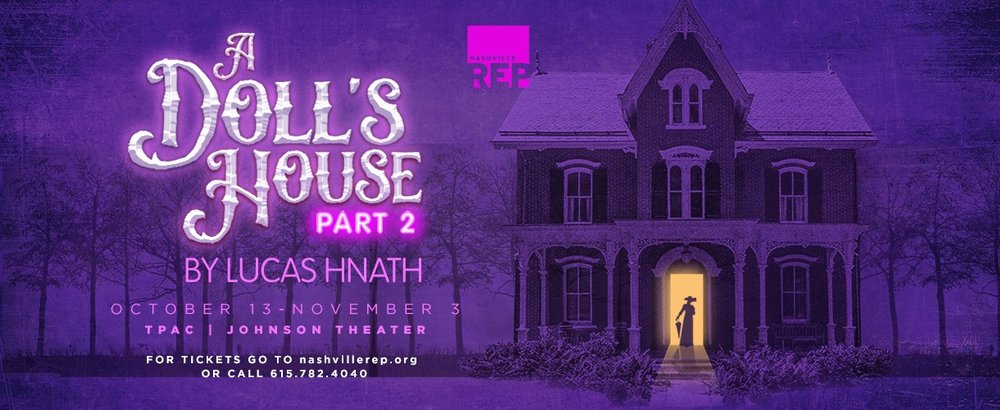
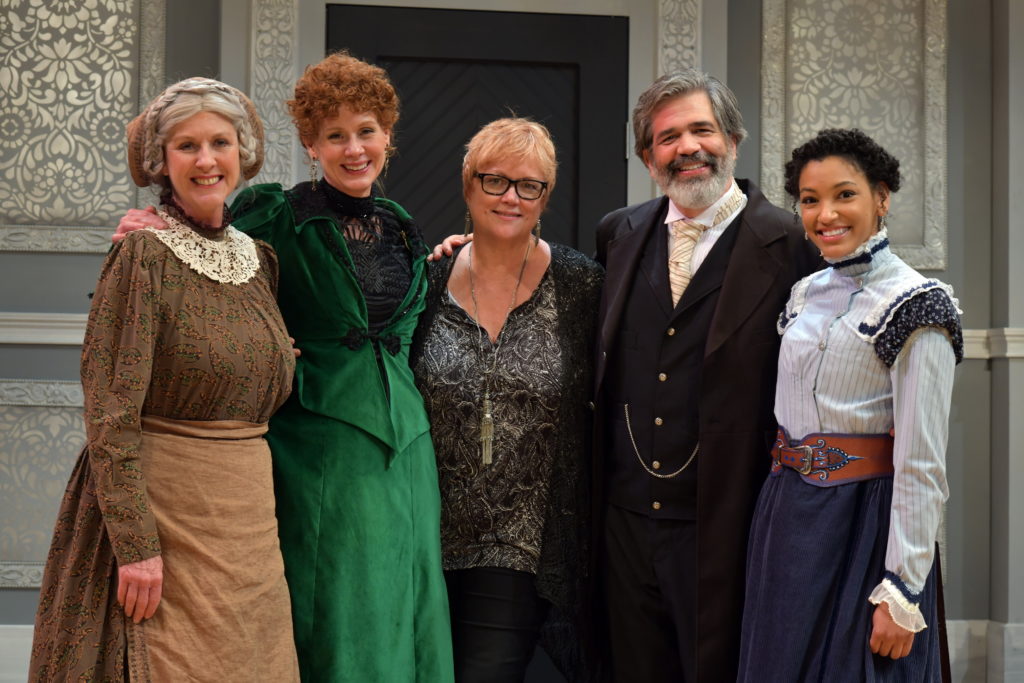
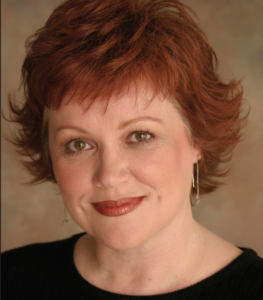 JHP: From a director’s standpoint, what attracted you to A Doll’s House, Part 2?
JHP: From a director’s standpoint, what attracted you to A Doll’s House, Part 2? JHP: In the fifteen years that has passed between the story depicted in Henrik Ibsen’s original and Lucas Hnath’s A Doll’s House, Part 2, has A) Nora changed, or B) simply cultivated characteristics that were already present?
JHP: In the fifteen years that has passed between the story depicted in Henrik Ibsen’s original and Lucas Hnath’s A Doll’s House, Part 2, has A) Nora changed, or B) simply cultivated characteristics that were already present? JHP: What can you tell me about Torvald?
JHP: What can you tell me about Torvald?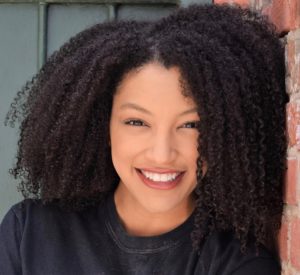 JHP: You play Emmy, one of Nora and Torvald’s three children she abandoned as depicted in the final scene of Henrik Ibsen’s original. Part 2 picks up fifteen years later. In finding your voice for Emmy, did you imagine certain mother/daughter circumstances that she missed that might have molded her current fiber?
JHP: You play Emmy, one of Nora and Torvald’s three children she abandoned as depicted in the final scene of Henrik Ibsen’s original. Part 2 picks up fifteen years later. In finding your voice for Emmy, did you imagine certain mother/daughter circumstances that she missed that might have molded her current fiber?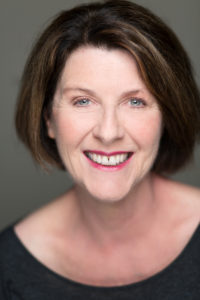 JHP: What does the audience need to know about Anne Marie?
JHP: What does the audience need to know about Anne Marie?